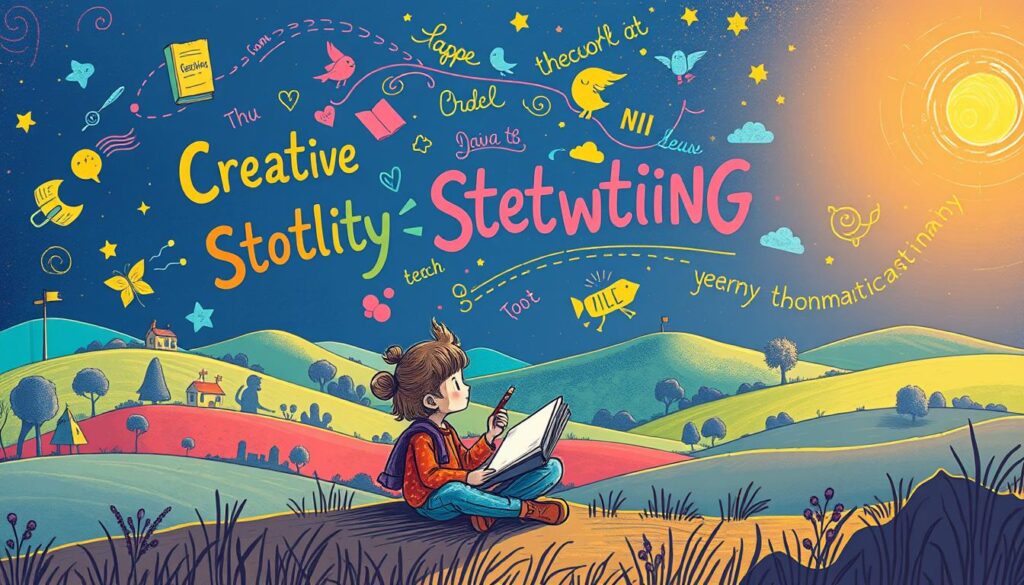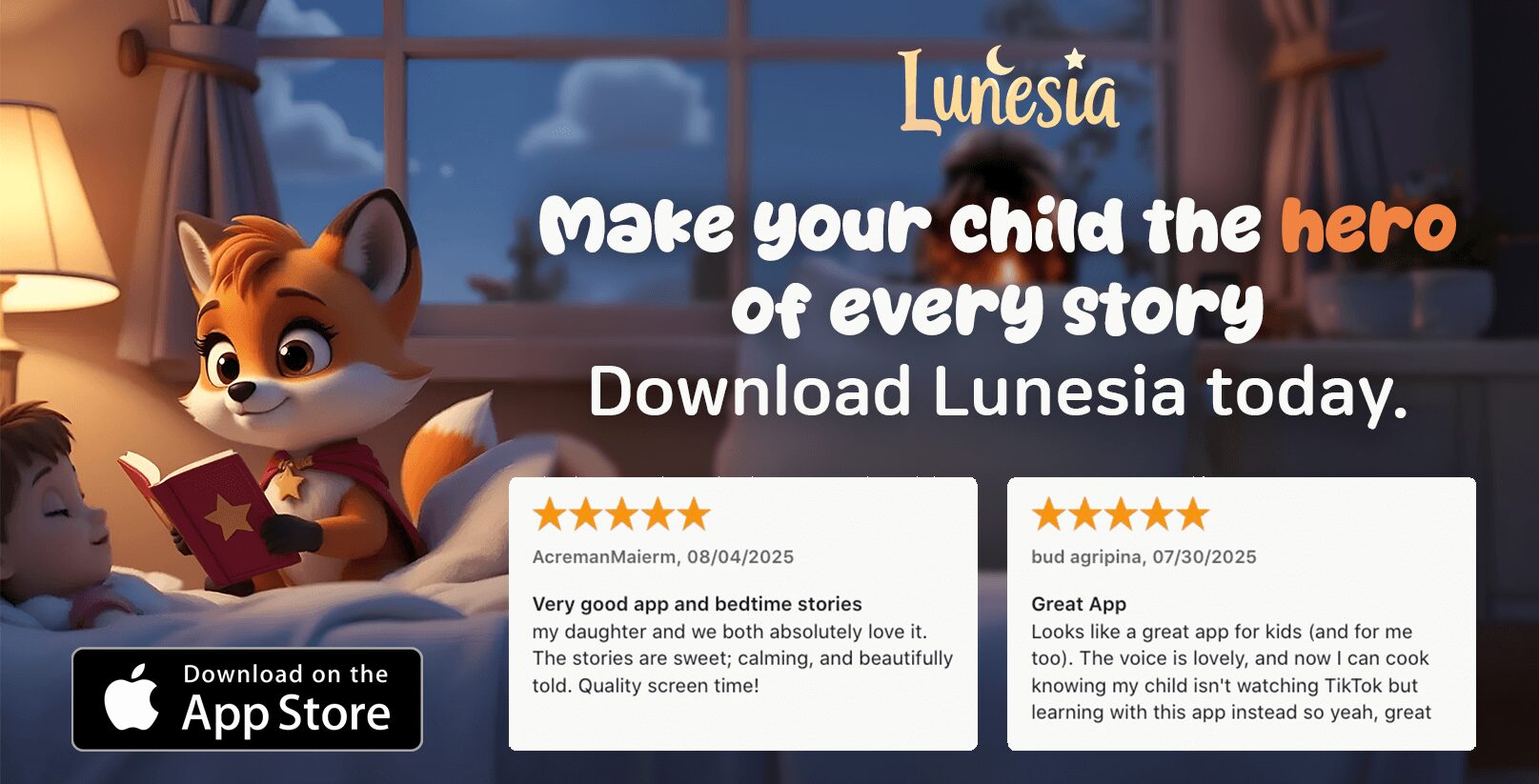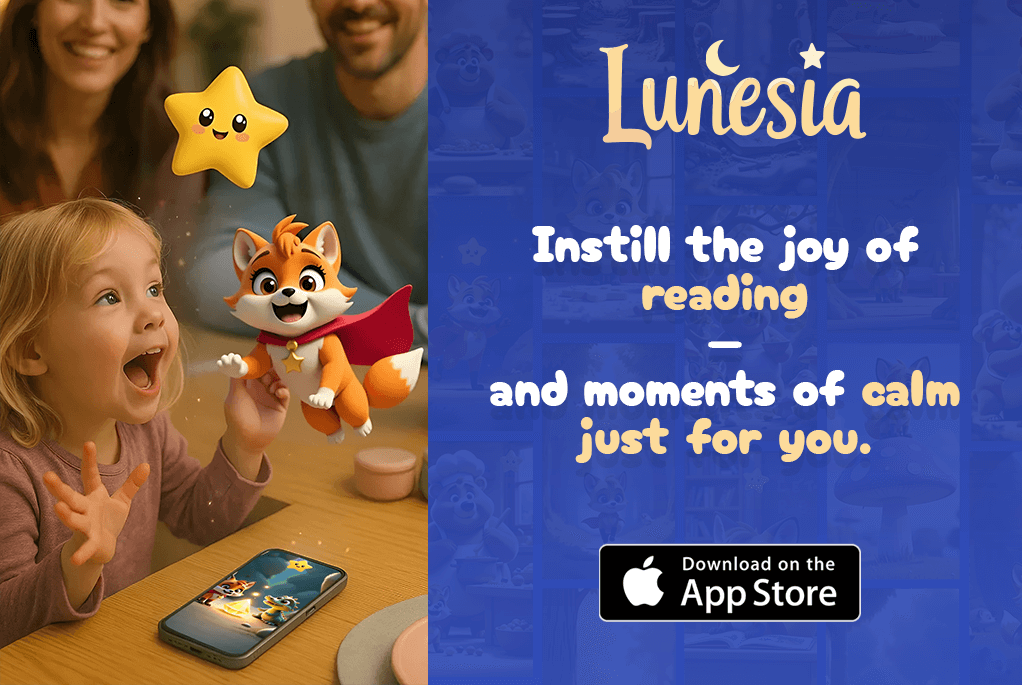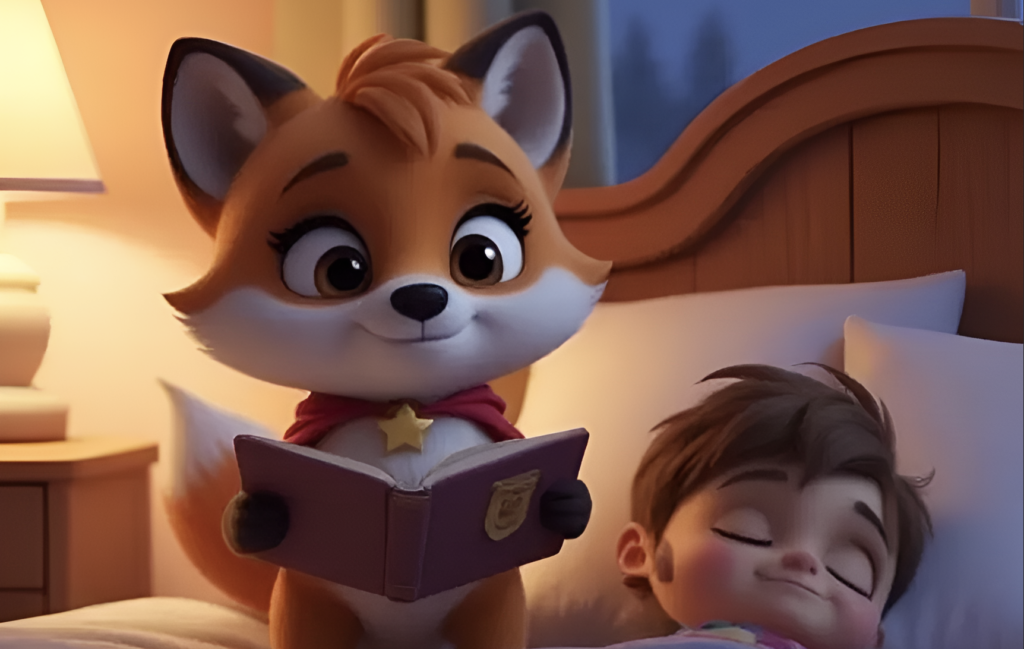What if the secret to calming your child’s frustration isn’t a timeout but a tale? I’ve been there—kneeling eye-to-eye with a little one mid-meltdown, wondering how to turn tears into trust. Whining isn’t just noise; it’s a plea for connection. And here’s the twist: stories might be your most powerful tool to reshape this dynamic.
Parenting experts like Janet Lansbury remind us that whining often stems from unmet needs or big emotions. When kids struggle to express themselves, they default to behaviors that test our patience. But judging the behavior rarely helps. Instead, we need to listen deeper.
Imagine transforming tense moments into bonding opportunities through playful narratives. A dragon who “forgets” polite words? A superhero learning to ask for help? These aren’t distractions—they’re bridges. By guiding children to use words instead of whimpers, we teach emotional literacy while keeping their dignity intact.
This approach isn’t about quick fixes. It’s about creating a safe space where feelings are acknowledged, boundaries stay firm, and communication grows stronger. Ready to swap frustration with connection? Let’s explore how stories can become your family’s new language.
Understanding Whining and Its Impact on Family Dynamics
Ever found yourself puzzled by that high-pitched tone that seems to echo through the house? I’ve learned through years of parenting—and countless podcast interviews with experts—that what sounds like complaining is often a coded message. “Whining isn’t the problem,” one mom shared on The Parenting Reset. “It’s the smoke alarm telling us there’s emotional fire underneath.”
What Whining Signals for Children
Picture this: your little one tugs at your sleeve, voice trembling as they beg for a toy. They’re not being “difficult”—they’re using the only tool they have to say, “I’m overwhelmed” or “I need you.” Common triggers like fatigue, hunger, or transitions often spark this behavior. A preschool teacher once told me, “When kids whine about snack time, they’re really asking, ‘Am I safe? Do you see me?’”
Effects on Parent-Child Connection
How we respond matters deeply. Reacting with irritation (“Stop that voice!”) can make young ones feel dismissed. But leaning in with curiosity (“Your words sound wobbly—are you feeling stuck?”) builds trust. I’ve seen families transform when they shift from seeing whining as a habit to treating it as a dialogue starter.
One dad described his breakthrough: “Instead of saying, ‘Don’t whine,’ I started asking, ‘What does your whine want to tell me?’ Suddenly, my daughter was explaining her fear of bedtime shadows.” By reframing these moments, we teach kids their feelings matter—and that’s how strong bonds grow.
Identifying the Root Causes of Whining in Children
You know that shaky, drawn-out tone that makes you glance at the clock? I’ve noticed it often starts as a simple request—“Can I have juice?”—but spirals when hidden needs lurk beneath. Parenting coach Dr. Laura Markham once shared in a workshop: “Whining is like a flashlight—it shows us where to look, not what’s broken.”

Physical vs. Emotional Triggers
Imagine your little one begging for cookies 10 minutes after lunch. It’s easy to assume they’re being stubborn. But sometimes, their bodies speak louder than their words. Tiredness, hunger, or sensory overload can turn small requests into big reactions. One mom told me, “When my son whines about shoes, it’s usually code for ‘I’m exhausted from preschool.’”
Emotional sparks differ. A kiddo pleading “Carry me!” might really mean “I feel disconnected.” Research shows kids often use whimpers when they lack tools to express complex feelings like jealousy or anxiety.
Unmet Needs and Frustrations
Here’s the twist: that whine about “not wanting broccoli” might not be about veggies at all. A 2022 study in Child Development found that 68% of whining episodes stem from frustration over feeling misunderstood. When we probe gently (“Are you upset because your tower fell?”), we often uncover deeper struggles.
Try this: Next time your little one’s voice wobbles, pause and ask, “Is your body upset or your heart?” This simple question helps them—and you—identify whether they need a snack or a snuggle. Consistency here builds trust, showing them their voice matters.
The Importance of Self-Regulation for Parents
Ever felt your pulse quicken as your little one’s voice rises? I’ve learned through trial (and many errors) that our calm is contagious. Dr. Jazmine McCoy, a child psychologist, puts it plainly: “When parents master self-regulation, they become emotional anchors for their kids.” This isn’t about perfection—it’s about showing up with intention.
Calming Techniques in the Moment
Try these science-backed strategies when tension spikes:
- Breathe before speaking: Inhale for 4 counts, hold for 4, exhale for 6
- Pause and name: Whisper “I’m feeling overwhelmed—let’s reset”
- Physical grounding: Press palms together or feel your feet on the floor
One mom shared how stepping outside for 30 seconds helped her respond to her daughter’s meltdown with patience instead of frustration. Small pauses create space for empathy.
Modeling Positive Behavior
Kids mirror what they see. When we use clear words during conflicts (“I need quiet to think”), we teach them to articulate feelings too. A 2023 study found that parents who verbalized their emotional process had children 40% less likely to resort to whimpers.
| Situation | Reactive Response | Regulated Response |
|---|---|---|
| Broken toy tantrum | “Stop crying—it’s just a toy!” | “This feels really disappointing, huh?” |
| Bedtime resistance | “Enough stalling—lights out NOW” | “Let’s plan tomorrow’s adventure first” |
| Sibling rivalry | “You’re both being ridiculous” | “I see two kids who need help sharing” |
Remember, self-care isn’t selfish—it’s strategic. Parents prioritizing their well-being (especially when parenting a child with unique) build homes where emotions flow safely. Progress over perfection wins every time.
How to Stop Child Whining: Techniques and Tools
Picture this: Your little one tugs your sleeve, their voice quivering as they plead for attention. Instead of frustration, you reach for two powerful tools—clear communication and structured boundaries. These aren’t just quick fixes but lifelong skills that turn meltdowns into meaningful moments.
Using Your Words Effectively
I’ve found that modeling specific phrases works like magic. When my niece whined, “I want it NOW!”, I knelt down and whispered, “Try ‘May I have help, please?’”. Within days, she started replacing demands with polite requests. Research shows kids mirror our language patterns—consistent examples teach them to articulate needs respectfully.
Try this exchange:
- Whiny request: “I can’t find my toy!” (arms crossed)
- Guided response: “Let’s say, ‘Mom, could we look together?’”
For deeper strategies, explore practical ways to help them speak.
Conditional Yeses and Structured Boundaries
“Yes, we can play—after we finish lunch.” This approach acknowledges their desire while teaching delayed gratification. A 2023 study revealed that conditional yeses reduce power struggles by 57% when paired with clear timelines.
| Situation | Reactive Answer | Structured Response |
|---|---|---|
| Screen time plea | “Not now!” | “When the timer rings, we’ll discuss” |
| Bedtime protest | “No more stories!” | “Tomorrow night, you pick two books” |
Pair these with routines like interactive bedtime stories to reinforce consistency. Every calm interaction builds trust—and that’s how whimpers transform into confident communication.
Creative Storytelling Techniques for Positive Communication
Have you ever watched a bedtime story melt away tension like magic? I’ll never forget the night my nephew’s protests about brushing teeth vanished when I whispered, “Let’s ask the Tooth Fairy how she stays cavity-free!” Stories aren’t just entertainment—they’re secret passages into emotional problem-solving.

Engaging Your Child Through Stories
When frustration bubbles up, try “narrative redirection”. One mom from The Parenting Reset podcast shared how she transformed grocery store meltdowns: “We pretend the shopping cart is a spaceship collecting ‘peaceful planet’ supplies—suddenly, whimpers turn into teamwork.” This approach shifts focus from demands to collaborative imagination.
Lessons Embedded in Everyday Narratives
Simple tales teach big skills. A story about a squirrel learning to use words instead of screeching helps kids grasp communication. Research shows children remember lessons 73% better when wrapped in characters’ adventures.
Try this: Next time emotions flare, invent a two-sentence story starring your little one. “Once, a brave explorer felt stuck—until she said ‘I need help!’” Pair this with interactive bedtime stories to reinforce emotional vocabulary. Consistency turns these moments into lifelong tools for expressing feelings with confidence.
Using Books and Media to Foster Healthy Communication
Have you ever noticed how a well-chosen story can turn a meltdown into a moment of connection? I’ll never forget the day my niece’s frustration over sharing toys dissolved when we read “The Color Monster” together. Books and media aren’t just distractions—they’re emotional toolkits that help kids name what’s bubbling inside.
Book Recommendations on Emotional Literacy
Experts like Dr. Becky Kennedy swear by stories that give feelings texture. Try these favorites:
- “Ruby Finds a Worry” by Tom Percival (ages 3-7)
- “The Way I Feel” by Janan Cain (ages 2-5)
- “Listening to My Body” by Gabi Garcia (ages 4-8)
These titles help children connect physical sensations to emotions—a key step in replacing whimpers with clear use words. Pair reading time with questions like “When did you feel like Ruby today?” to spark deeper talks.
Incorporating Media as a Teaching Tool
Screen time gets a bad rap, but curated content can reinforce emotional skills. The podcast “Peace Out” teaches breathing techniques through calming stories, while YouTube’s Cosmic Kids Yoga blends movement with emotional literacy. For parents, free resources like Yale’s Emotion Coaching Guide offer scripts for tough moments.
Pro tip: Watch media with your kids, pausing to ask “What would you say to that character?” This transforms passive viewing into active practice for real-life challenges. When stories become shared language, whining often loses its power.
Real-Life Parenting Insights and Expert Advice
What’s the difference between a meltdown at the park and one at bedtime? I discovered the answer through The Mom Hour podcast, where hosts Meagan and Sarah shared how their daughters’ opposite temperaments required tailored approaches. “My analytical kid needs logical explanations,” Sarah explained, “while my sensitive one craves physical reassurance first.”
Learning from Parenting Podcasts
Carol Tuttle’s Child Whisperer framework transformed how I view behavior. She categorizes communication styles into four types:
- The “Why” Kid: Needs detailed reasons (“Let’s talk about why we share”)
- The “Feel” Kid: Responds to emotional validation (“I see this feels unfair”)
- The “Do” Kid: Thrives with action plans (“Let’s solve this together”)
One mom on Unruffled shared: “When my son whined about homework, I stopped saying ‘Just finish it’ and asked, ‘What part feels too big?’ Suddenly, he named his fear of mistakes.”
Adapting Strategies to Unique Needs
Your little one’s personality dictates what works. A spirited kid might need movement breaks during transitions, while a cautious child benefits from advance warnings. As Your Parenting Mojo host Jen Lumanlan notes: “Consistency matters, but rigidity backfires.”
| Situation | Reactive Approach | Tailored Response |
|---|---|---|
| Morning rush meltdown | “Hurry up!” | “Let’s race the clock—ready?” |
| Refusing vegetables | “Eat three bites” | “Which dip should we try tonight?” |
If a strategy fails, ask: “Is this about their needs or my expectations?” Sometimes swapping “time-outs” for “connection corners” shifts the dynamic. Progress happens when we match our tools to their world.
Conclusion
The journey from frustration to connection starts with one powerful truth: every whimper holds wisdom. Through playful storytelling and intentional listening, we transform tense moments into bridges of understanding. Remember Dr. Jazmine McCoy’s insight—“Our calm becomes their compass”—as you guide little ones toward expressing needs with clarity.
Small shifts create lasting change. Whether it’s naming emotions through books like Ruby Finds a Worry or offering structured choices (“Snack first, then playground”), these tools empower kids to use words instead of whines. Celebrate progress, even when it’s messy—that preschooler who once melted down over socks might surprise you with a polite request tomorrow.
This work isn’t about perfection. It’s showing up, breath by breath, as parents who model resilience. When tough days come (and they will!), lean into conditional yeses and collaborative stories. Those five-minute puppet shows or whispered bedtime tales? They’re building emotional muscles stronger than any timeout.
Keep adapting as your child grows. What soothes toddlers (think dragon-themed deep breathing) evolves into tween journaling prompts. Trust that every effort to listen deeply—even when patience wears thin—plants seeds of mutual respect. You’ve got this. And when doubt creeps in? Return here. Your parenting story is still being written, one compassionate chapter at a time.
FAQ
How can I respond when my child whines without reinforcing the behavior?
Try a calm “I hear you’re upset – let’s use your strong voice” approach. Acknowledge their feelings while modeling clear communication. For example: “When you talk like that, my ears get confused. Show me with words!” This redirects while teaching emotional literacy.
What does persistent whining indicate about my child’s needs?
It often signals unmet physical needs (hunger/tiredness) or emotional gaps like needing connection. Track patterns – does it spike before meals or transitions? I keep a “whine journal” to spot triggers – you’ll be shocked how predictable those meltdowns become!
Are there specific phrases that work better than "stop whining"?
Absolutely! Try empowerment language: “Let’s restart that sentence with your powerful voice” or “I need your detective skills to solve this problem.” My favorite? Whispering “Oh no! My ears only understand superhero voices!” – works 80% of the time.
How do I stay calm when the whining triggers my own frustration?
Practice the 4-7-8 breathing trick (inhale 4 counts, hold 7, exhale 8). I literally say: “Mommy’s doing her calm-down breaths – want to join?” Kids mirror our regulation. Keep a stress ball in your pocket – squeeze it while repeating “This is their struggle, not mine.”
Can stories really help reduce whining episodes?
A> 100%. Create a “Whiney Wendy” character who learns better ways. “Remember how Wendy’s ‘I want it NOW’ voice made her throat scratchy? What happened when she tried her ‘May I please’ words?” Kids love critiquing fictional characters’ behavior – it depersonalizes the lesson.
What children’s books teach communication skills effectively?
A> Try My Mouth Is a Volcano! by Julia Cook (impulse control) and The Way I Feel by Janan Cain (emotional vocabulary). For older kids, What If Everybody Did That? sparks great conversations about social awareness.
How do I handle whining in public without embarrassment?
Prep with a secret signal (tug ear = “reset your voice”). Carry a “communication helper” like a finger puppet that “only talks in kind voices.” If overwhelmed, use the BRIEF method: Breathe, Reflect emotion, Invite solution, Exit if needed, Follow up later.




